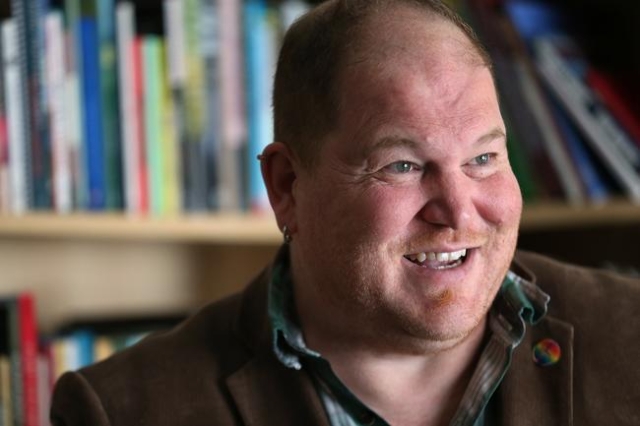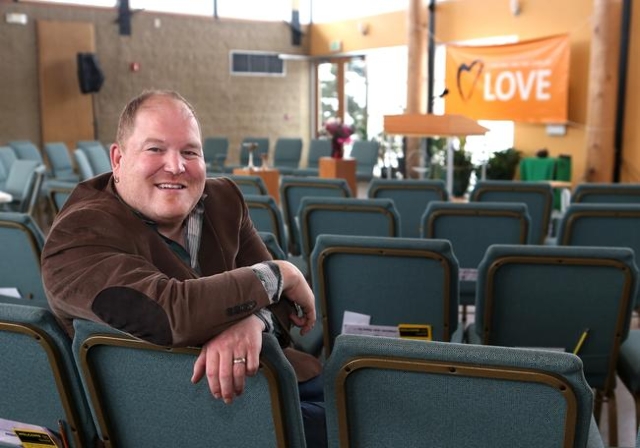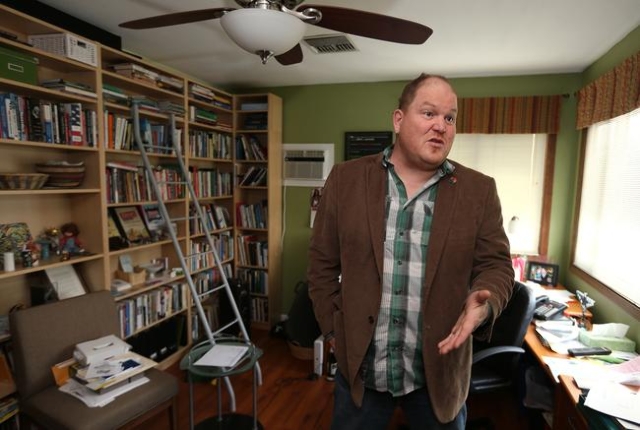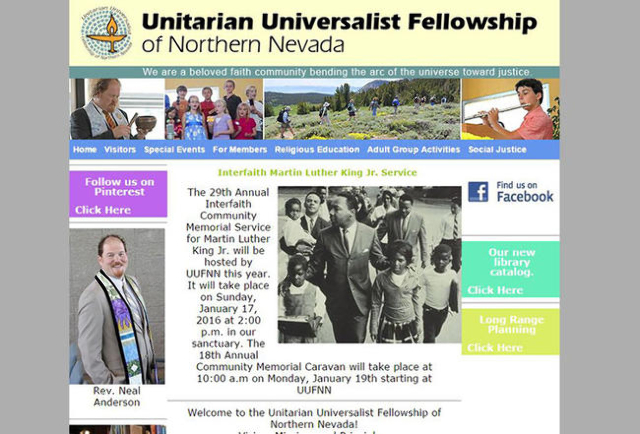Nevada’s only sanctuary church protects father of 2 from deportation
RENO — Nevada's only sanctuary church has already protected one person living in the country illegally who was facing imminent deportation.
The Rev. Neal Anderson of the Unitarian Universalist Fellowship of Northern Nevada said recently that his congregation is prepared to do so again if the need arises.
Anderson said the entire congregation had a "vigorous discussion" in November before deciding to declare itself a sanctuary church in reaction to what he calls an immoral immigration system that leads to the separation of families.
Just weeks later, the church was notified by a faith-based community group called ACTION that Jose Gastelum, a Reno resident for 10 years with a wife and two children who are American citizens, faced imminent deportation by U.S. Immigration and Customs Enforcement.
Gastelum came to ICE's attention when in 2012 he was arrested for driving under the influence. Local law enforcement provided information about Gastelum to ICE, which held him in detention for three months.
Anderson said Gastelum worked with ICE during the whole time, but there were concerns that he was going to be returned to his home country when he showed up for his next appointment with the agency in January.
Although a DUI charge is serious, Gastelum's deportation would have split apart his family and left his wife and children without a means of support, Anderson said.
So sanctuary was offered to Gastelum, who spent four days on the campus of the church in a classroom temporarily converted to a place where he could sleep and eat and spend time with his family.
During this time, ACTION and others petitioned ICE to use its "prosecutorial discretion" to stay his deportation. ICE did so, allowing Gastelum to return home and look for a new job.
"It was a very fluid situation but in the end he received a stay of deportation," Anderson said. "ICE has some discretion in their enforcement priorities. The family is safe and they don't have to worry when they hear a knock on the door."
Gastelum's wife, Arlene Torres, did not want to comment in much detail because her husband is trying to secure employment.
But she did say that the four days in sanctuary was appreciated.
"It helped for my husband to be there and have the support of ACTION," she said. "It did help a lot."
Centuries-old idea
Anderson said the idea of sanctuary dates back many centuries where a tradition of "radical hospitality" was extended to people in trouble.
More recently it has been offered by churches nationally as part of a comprehensive effort aimed at immigration reform, he said.
"So our congregation had a long conversation after seeing that this movement was attempting to raise the level of understanding," Anderson said.
"There is the individual part where we can help a family stay together. But the bigger goal is for people to have a greater understanding of how our immigration system treats people in it — and down the line find a way to have moral legislation to enable families to remain together and not be separated by a border."
The sanctuary movement emerged in the U.S. in the 1980s when churches offered help to Central American refugees fleeing repressive governments in their home countries. It re-emerged in 2014 when there were concerns that roundups of people living in the U.S. without documentation were imminent. There are a limited number churches offering sanctuary currently, and only a handful of individuals have sought refuge.
ICE said in a response that immigration enforcement efforts are focused on individuals who threaten public safety and national security, including convicted felons, gang members and illegal entrants apprehended at the border.
As to sanctuary churches, ICE has established guidelines regarding enforcement action in "sensitive" locations including schools and places of worship. The policy states that enforcement actions should not occur at, nor be focused on, sensitive locations unless certain emergency circumstances exist, such as imminent risk to life and limb.
Sanctuary concerns
Sanctuary efforts have raised concerns in some cities that have identified their communities as places where undocumented immigrants who are otherwise law-abiding are protected from deportation.
The most notorious example occurred in San Francisco in July, when frequent deportee Francisco Lopez-Sanchez is alleged to have shot and killed 32-year-old Kate Steinle as she walked along a pier with her father.
Nevada Appeal columnist Guy Farmer has criticized Anderson and the sanctuary effort at the Reno church, saying in a recent post: "I have little sympathy for illegal immigrants who make no effort to comply with our laws. In my opinion, Gastelum is a prime candidate for deportation, and he's lucky I'm not his immigration court judge."
Anderson said his congregation is working on fighting racism and systems of oppression so the sanctuary designation is a way to have some "skin in the game."
"Any system that is going to split families is immoral," he said. "These families who are working and going to school, they shouldn't be threatened all the time with being separated."
Anderson said the sanctuary movement is largely in response to Congress' failure to act on immigration reform proposals.
"We figure that if the legislatures can't act, then the people have to act to change this immoral system to a moral system," he said.
— Contact Sean Whaley at swhaley@reviewjournal.com or 775-461-3820. Find him on Twitter: @seanw801

























